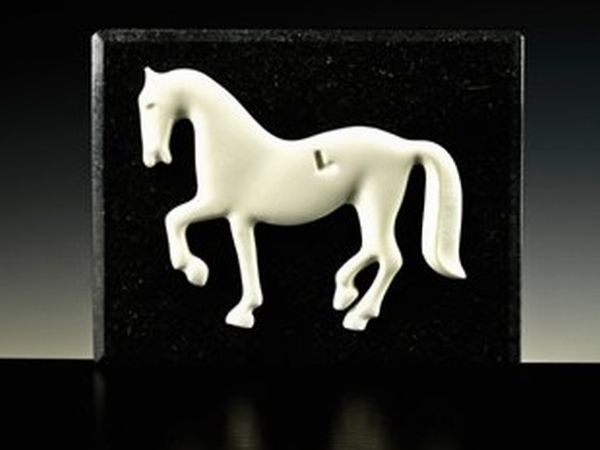
The graceful designs can be seen across Slovenia: horses, glasses, cups, and various other objects, both decorative and useful. They are the creations of Oskar Kogoj, one of the country’s most interesting and innovative designers.
Kogoj was born in the western Slovenian village of Miren near the Italian town of Gorzia in 1942. Even though Miren became a part of Yugoslavia after World War II, the area’s cultural bonds to Italy marked Kogoj’s career in many ways.
He first became acquainted with the world of design when he attended a special design-oriented high school in Ljubljana. Some of the teachers there had been taught by Joze Plečnik, the famed Slovenian architect. Kogoj then continued his art education in Venice. While still a student, he designed a mosaic for a church in his hometown.
After graduating from Istituto Statale d'Arte in 1966, Kogoj taught at several schools in Italy and served as a design consultant for an Italian company. However, he became better known in Slovenia when he joined Meblo, then a major furniture maker. At the time, Slovenian companies were beginning to realize the importance of good design, and the Italian-educated Kogoj brought fresh air to the state-owned corporation.
Kogoj ultimately emerged as a highly sought-after freelance designer. His work has been exhibited abroad, and has been praised for its ability to combine a cosmopolitan spirit with a passion for his homeland.
Kogoj seeks inspiration in nature to come up with objects that are visually attractive, well-made, and enjoyable for use, whether they are mirrors, glasses, or cups.
He also doesn’t shy away from art for art’s sake: Among his most recognized brands are statues of horses. The sculptures are based on an archeological find in Slovenia dating back to the ancient Venetians, who were well-known as horse breeders.
The stylized horse statues, the largest of which is on public display in the town of Slovenj Gradec, are typical of Kogoj’s work: They have origins in his homeland and blend natural forms with a sleek, modernistic design – always a recognizable trademark of his artistic work.

































































